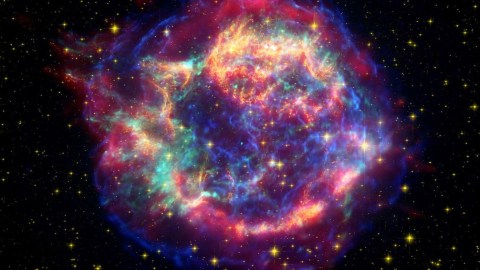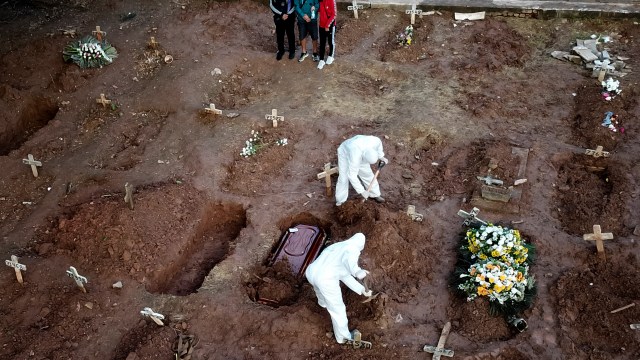Physicist discovers the explosions that will end our universe

Credit: NASA/JPL-Caltech/STScI/CXC/SAO
What will the end of the universe look like? A new study shows a series of black dwarf explosions might be the final coda in its story.
Matt Caplan, the theoretical physicist from Illinois State University who conducted the study, says the end-times universe will be “a bit of a sad, lonely, cold place.” Most scientists expect not much will be around to witness the proceedings of this “heat death” – just black holes and burned-out stars. But Caplan also sees something else happening then.
As the universe functions now, massive stars die in supernova explosions that follow an over-accumulation of iron in their cores. The smaller stars meet their demise by burning through all their nuclear fuel and turning into white dwarfs. Caplan’s research shows that as these space objects proceed to cool over trillions of years, they will dim completely, freeze into solids and become “black dwarfs.” These super dense stellar bodies will contain mostly elements like carbon and oxygen and will be the size of Earth while having as much mass as the sun.
Caplan thinks that even though these stars will be burned out, slow fusion reactions will still take place, producing iron, which will eventually lead to explosions. The scientist calculates just how long these black dwarfs have before their supernovas in a future world filled with “sparse degenerate remnants,” as he calls them in his paper.
The first of these final booms of our universe will take place about 10 ^1100th years from now. “In years, it’s like saying the word ‘trillion’ almost a hundred times,” explains Caplan, pointing out that “If you wrote it out, it would take up most of a page. It’s mindbogglingly far in the future.”
He doesn’t anticipate that all black dwarfs would end up exploding, just the most massive ones, with the mass of about 1.2 to 1.4 times the mass of the sun. That means about 1 percent of the of stars that exist today will meet this eventuality. That’s about a billion trillion stars, if you’re counting. The rest will stay as black dwarfs.
What is a Black Dwarf?www.youtube.com
Caplan expects our sun won’t end up in a supernova either as it doesn’t have enough mass to explode.
When will all the final explosions stop, turning out universe into a dark, silent graveyard of cosmic shards? In about 10^32000 years.
“It’s hard to imagine anything coming after that, black dwarf supernova might be the last interesting thing to happen in the universe,” he shared. “They may be the last supernova ever.”
Check out the study published in the Monthly Notices of the Royal Astronomical Society.





